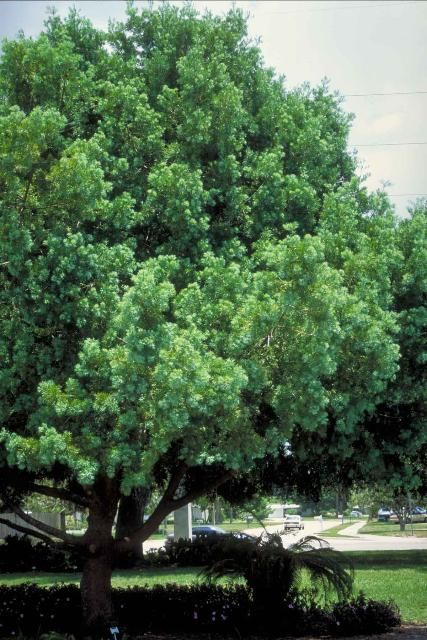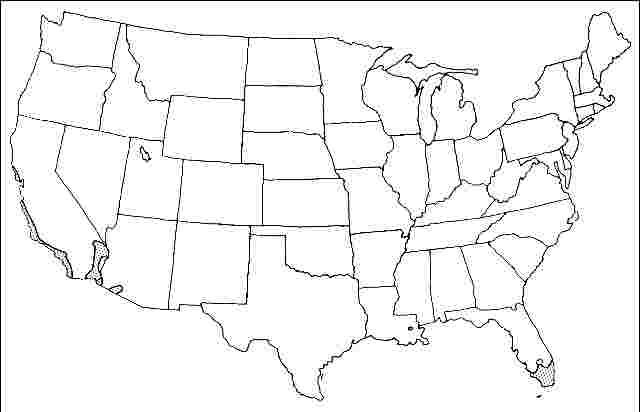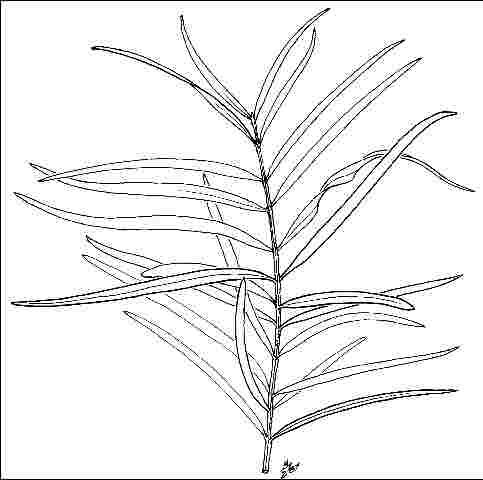Introduction
This 30 to 50-foot evergreen has a soft, graceful, billowy appearance of bright green new growth, dark green mature leaves, and weeping branch tips. If left unpruned the lower branch tips will touch the ground and the tree will appear as a stack of foliage emerging from the earth. With lower limbs removed a rounded vase shape or oval emerges creating dense shade beneath. Often used as an espalier, Fern Podocarpus is quite striking when used as a specimen, shade tree, or screening plant. It can make a beautiful street or parking lot tree but lower branches need to be removed with time as the tree grows since they tend to droop and could hinder traffic visibility. But this is a small price to pay for this wonderful tree. This is a tough plant which can grow very well in urban conditions. The trunk will slowly grow to be two feet in diameter or larger. Very adapted to downtown, restricted-soil planting sites, the roots rarely lift sidewalks or cause other problems.

Credit: Ed Gilman
General Information
Scientific name: Podocarpus gracilior
Pronunciation: poe-doe-KAR-pus grass-ILL-ee-or
Common name(s): Weeping Podocarpus, Fern Podocarpus
Family: Podocarpaceae
USDA hardiness zones: 10A through 11 (Fig. 2)
Origin: not native to North America
Invasive potential:has been evaluated using the IFAS Assessment of the Status of Non-Native Plants in Florida's Natural Areas (Fox et al. 2005). This species is not documented in any undisturbed natural areas in Florida. Thus, it is not considered a problem species and may be used in Florida.
Uses: trained as a standard; urban tolerant; screen; shade; specimen; espalier; street without sidewalk; parking lot island 100-200 sq ft; parking lot island > 200 sq ft; sidewalk cutout (tree pit); tree lawn 4-6 feet wide; tree lawn > 6 ft wide; highway median; container or planter; hedge; indoors
Availability: not native to North America

Description
Height: 30 to 50 feet
Spread: 25 to 35 feet
Crown uniformity: symmetrical
Crown shape: weeping, oval
Crown density: dense
Growth rate: slow
Texture: fine
Foliage
Leaf arrangement: opposite/subopposite (Fig. 3)
Leaf type: simple
Leaf margin: entire
Leaf shape: linear
Leaf venation: parallel, none, or difficult to see
Leaf type and persistence: evergreen
Leaf blade length: 2 to 4 inches
Leaf color: green
Fall color: no color change
Fall characteristic: not showy

Flower
Flower color: yellow
Flower characteristics: not showy
Fruit
Fruit shape: irregular, round
Fruit length: .5 to 1 inch
Fruit covering: fleshy
Fruit color: red
Fruit characteristics: does not attract wildlife; not showy; fruit/leaves not a litter problem
Trunk and Branches
Trunk/bark/branches: branches droop; not showy; typically one trunk; thorns
Pruning requirement: little required
Breakage: resistant
Current year twig color: green, brown
Current year twig thickness: medium
Wood specific gravity: unknown
Culture
Light requirement: full sun, partial sun or partial shade
Soil tolerances: clay; sand; loam; alkaline; acidic; well-drained
Drought tolerance: high
Aerosol salt tolerance: low
Other
Roots: not a problem
Winter interest: no
Outstanding tree: yes
Ozone sensitivity: unknown
Verticillium wilt susceptibility: unknown
Pest resistance: free of serious pests and diseases
Use and Management
Used as a large patio tree, the fine-textured foliage is sure to draw a complimentary remark from visitors and friends. Almost appearing like a large, soft, green cloud, Fern Podocarpus creates a beautiful effect when placed beside a pond or other water interest. The tree combines well with Yellow Lantana or other low-growing yellow flowering ground covers planted under the tree. It compliments glass-sided structures well, its soft foliage shimmering and reflecting on a breezy, sunny day.
Growing in full sun or partial shade, it will tolerate a wide range of well-drained soils and should be protected from frost. In Florida, it is considerably tolerant of dry soils requiring no irrigation once established.
Propagation is by cuttings or layerings.
Pests and Diseases
No pests or diseases are of major concern. A very durable, low-maintenance tree which should be grown by nursery operators for use in urban and suburban landscapes.
Literature Cited
Fox, A.M., D.R. Gordon, J.A. Dusky, L. Tyson, and R.K. Stocker (2005) IFAS Assessment of the Status of Non-Native Plants in Florida's Natural Areas. Cited from the Internet (November 3, 2006), http://plants.ifas.ufl.edu./assessment.html